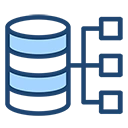Database schema for Social Networking Platform
Designing a database schema for a social networking platform involves capturing information related to users, posts, comments, friendships, and other relevant entities. Below is a basic example of a database schema for a Social Networking Platform.
Entities:
User:
- UserID (Primary Key)
- FirstName
- LastName
- Username
- PasswordHash
- Bio
- ProfilePictureURL
- RegistrationDate
Post:
- PostID (Primary Key)
- UserID (Foreign Key referencing User table)
- Content
- PostDateTime
Comment:
- CommentID (Primary Key)
- UserID (Foreign Key referencing User table)
- PostID (Foreign Key referencing Post table)
- CommentText
- CommentDateTime
Friendship:
- FriendshipID (Primary Key)
- UserID1 (Foreign Key referencing User table)
- UserID2 (Foreign Key referencing User table)
- Status (e.g., pending, accepted, declined)
- RequestDateTime
- AcceptanceDateTime
Like:
- LikeID (Primary Key)
- UserID (Foreign Key referencing User table)
- PostID (Foreign Key referencing Post table)
- LikeDateTime
Notification:
- NotificationID (Primary Key)
- UserID (Foreign Key referencing User table)
- NotificationText
- NotificationDateTime
- IsRead (boolean)
This schema covers the basic entities needed for a Social Networking Platform. Here are some explanations:
- Users have personal information stored, including their username, password hash, email, bio, profile picture, and registration date.
- Posts contain user-generated content and are associated with a specific user and post date.
- Comments are associated with both users and posts, allowing users to comment on each other's posts.
- Friendships represent the connections between users, including the status of the friendship (pending, accepted, declined).
- Likes record instances where users express approval for a post.
- Notifications are generated for user-related events, such as receiving a new friend request or a comment on a post.
Depending on the specific requirements of your Social Networking Platform, you may need to expand or modify this schema. Consider additional features such as private messaging, group creation, event tracking, or any other information relevant to your social networking platform. Additionally, ensure that your system follows best practices for privacy and security.

